Interior Architecture Students Design Free Floor Plans for Wildfire Survivors
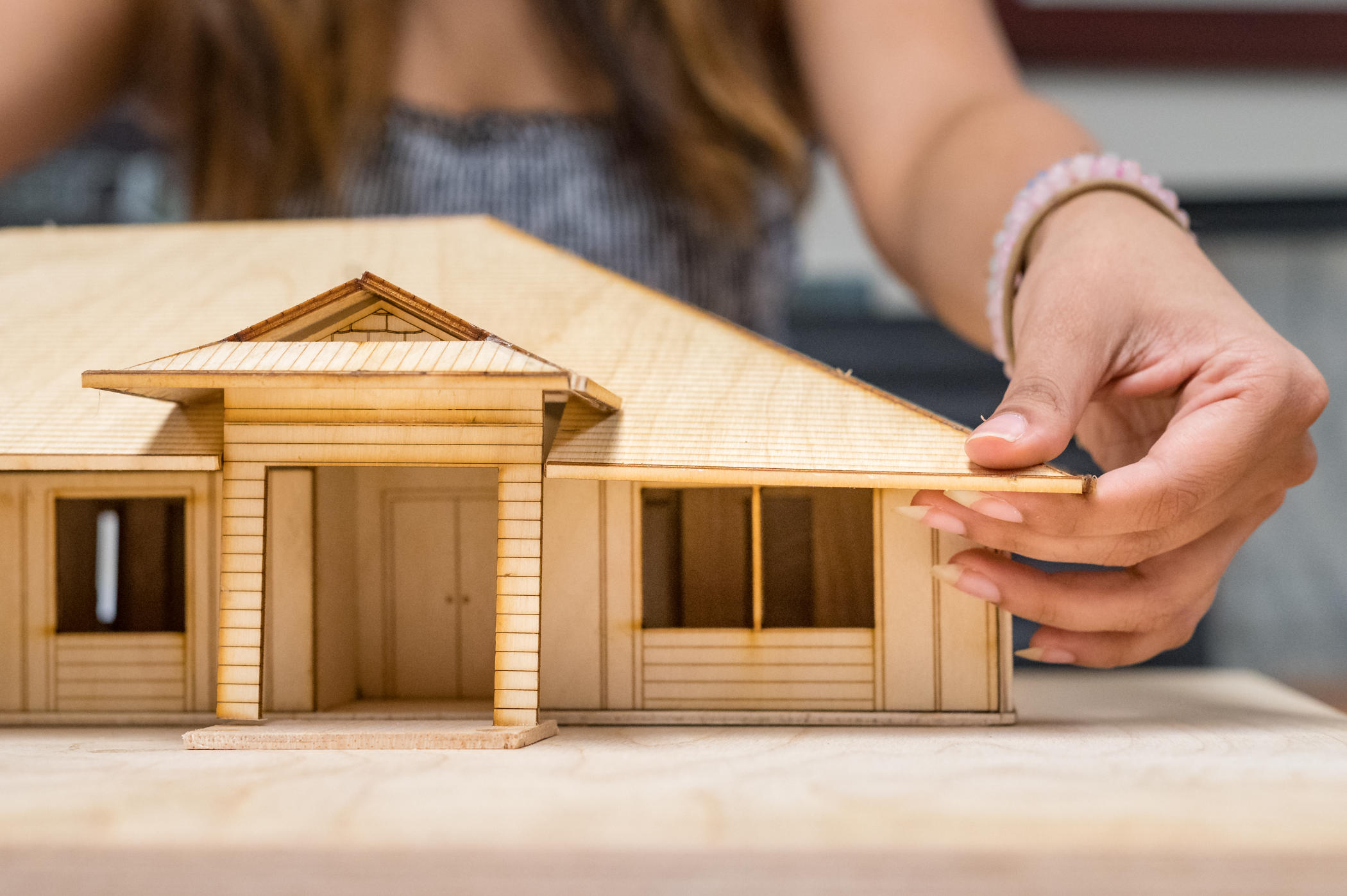
Students work on the architectural home designs for rebuilding Paradise that are assisting many families to get back in a home during their internship for Design SI Monday, October 3, 2022 in Chico, Calif. Habitat for Humanity picked up one of the three approved plans to be used in building over 120 structures in the area in an effort to rebuild Paradise after the 2018 Camp Fire that devastated the town. (Jason Halley/University Photographer/Chico State)
It’s a simple two-bedroom, two-bathroom cottage. The gabled roof stretches up toward the towering pines, and wooden beams line the welcoming front porch.
To some, it’s an everyday home. To others, it’s a new beginning. And it’s one of more than a dozen homes being rebuilt in the footprint of the Camp Fire using two low-cost floorplans created by Chico State interior architecture students.
In the weeks after the fire, interior architecture professor Rouben Mohiuddin came up with a vision
for how his students could leverage their expertise in partnership with professionals and serve the community at the same time. Four years after the Camp Fire devastated the towns of Paradise, Concow, Magalia, and other communities, nearly 1,600 homes have been rebuilt to date—a mere fraction of the 11,000 that were lost, but each one representing recovery for an individual or family.
“People have this idea that architectural design is big, flashy, and fancy buildings and interiors,” he said. “Sometimes simple designs like this can impact a community. They are humble homes, but they represent hope.”
The project began with a listening session with survivors.
“The first thing we wanted to do was understand the emotion and the culture. We wanted to see who these people were,” Mohiuddin said.
“Living in Paradise is different than living in Chico,” he added, noting that many rely on propane for heat and hot water, and septic tanks for wastewater rather than natural gas and city sewer lines. “We also wanted to know what the lifestyle was. What made Paradise so special? Why do these people want to rebuild?”
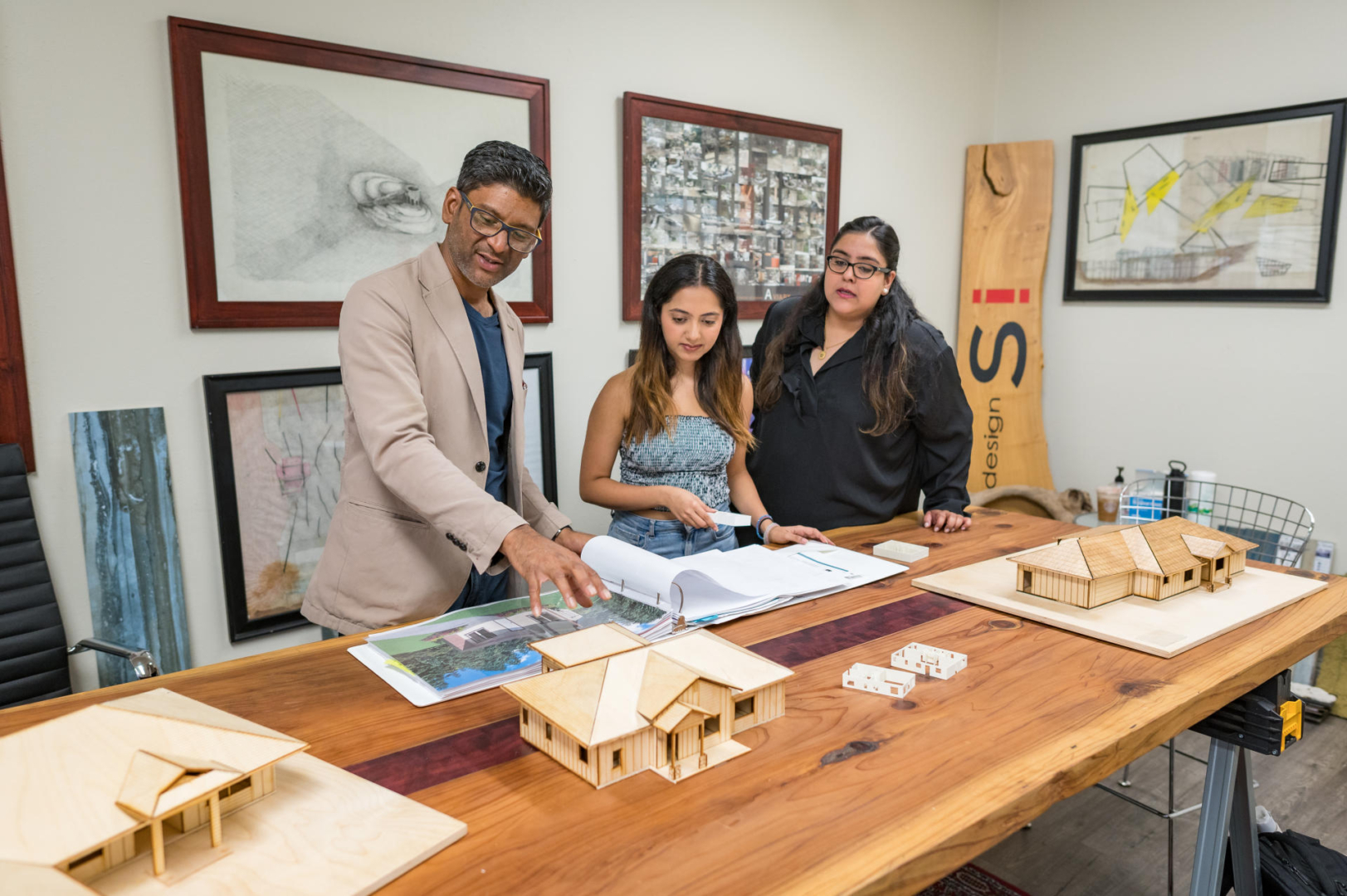
Ten students initially volunteered for the project and committed to treat it as a real job, knowing their designs would have lasting consequences for the communities in which they are built.
Under Mohiuddin’s guidance, the students collaborated with the Rebuild Paradise Foundation and industry professionals including architects, engineers, and contractors.
In addition to designing with residents’ needs and desires in mind, they also made considerations for site conditions, sustainable building practices, and affordability. One key factor was designing for fire prevention and safety, such as using insulated concrete forms, concrete fiberboard paneling, and ventless roofs.
“This has definitely prepared us for the world,” said senior and interior architecture major Hira Namit. “It’s not just us sitting at a computer and designing. You have to work with engineers, you have to sell it, you have to make everyone happy with what you created.”
Students asked survivors to identify designs that would be both functional and exciting. Given the chance to identify their wish-list, residents came up with ideas like mudrooms, kitchens that overlook the living room for an open-flow and family-driven concept, and capability to add a wraparound porch to sit outside and admire the regrowth and surviving Ponderosa pines.
“We wanted something spacious. When you sit in a house, you don’t want the ceiling to be just above your head,” Namit said. “And we wanted to embrace a lot of natural light.”
In October 2019, Mohiuddin’s students were met with applause as they presented their designs to a small group of survivors, who offered praise and some thoughtful suggestions, such as moving a free-standing counter to a wall to free up space for an island. Maybe the living room slider could be French doors, and perhaps a door could be added from the carport to enter the house.
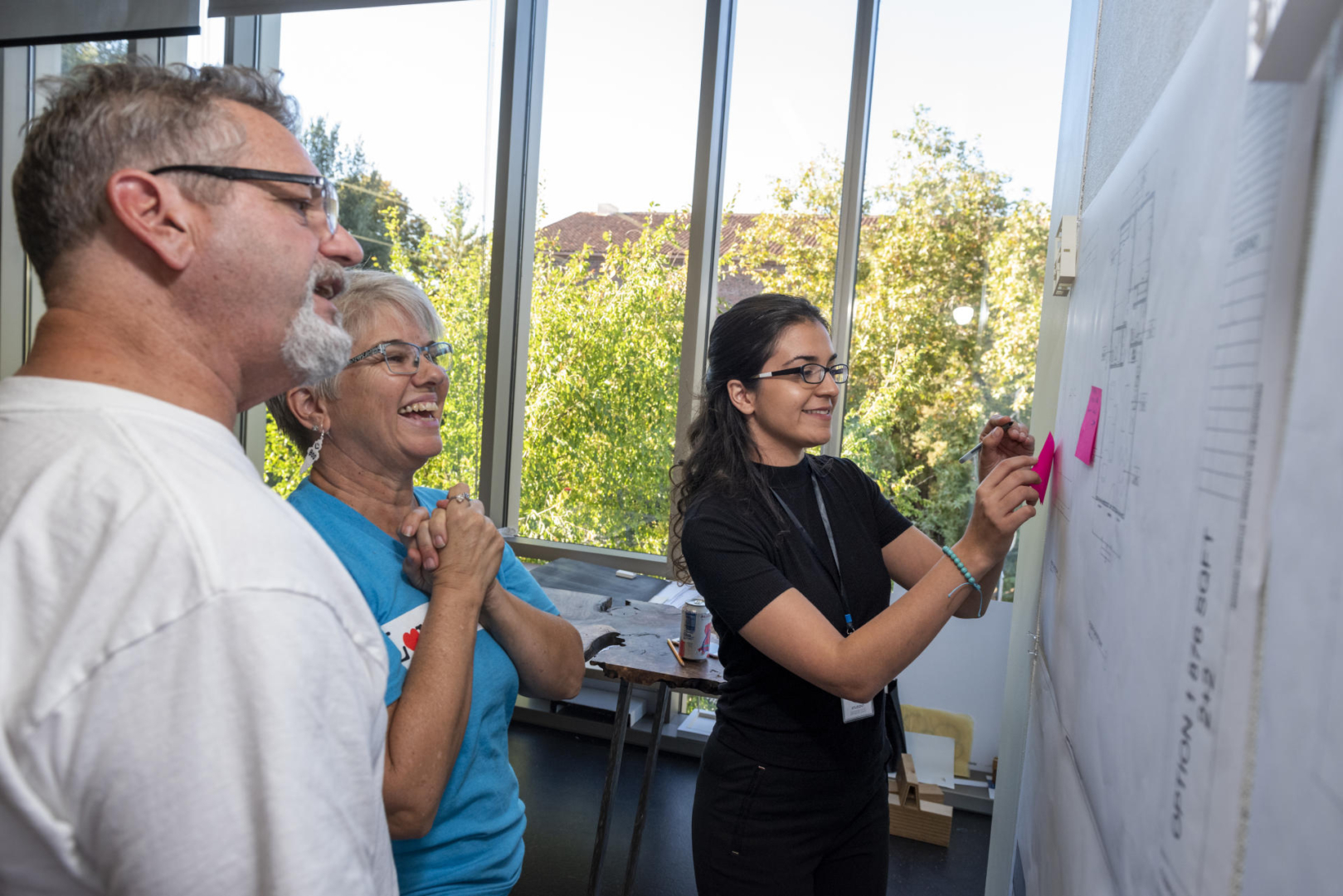
It was heartening, 12 months after the fire, to finally be looking at sketches of what their home could look like and envisioning themselves living inside it, said Paradise resident Mike Denofrio, as he and his wife, Allison, studied the floorplans in 2019.
“With the little bit of feedback, they turned it into this. It’s amazing,” he said.
Drawn to one layout in particular, the Denofrios chatted at length with its student designers. Mike could imagine himself watching football on Sundays in the open living room, and Allison started to envision dishes she could cook in her new kitchen—life as they once knew it and hoped to have again.
“The school has really stepped up and is putting a giant effort into recovery,” said Mike, who is a supervising painter for the University’s Facilities Management and Services Department. “Being able to work with the students is even more special.”
Though the Denofrios ultimately had a home design completed by a friend—and moved into their rebuilt house five months ago—Mike Denofrio, who has worked at Chico State for 11 years, said what the students did for the community is remarkable.
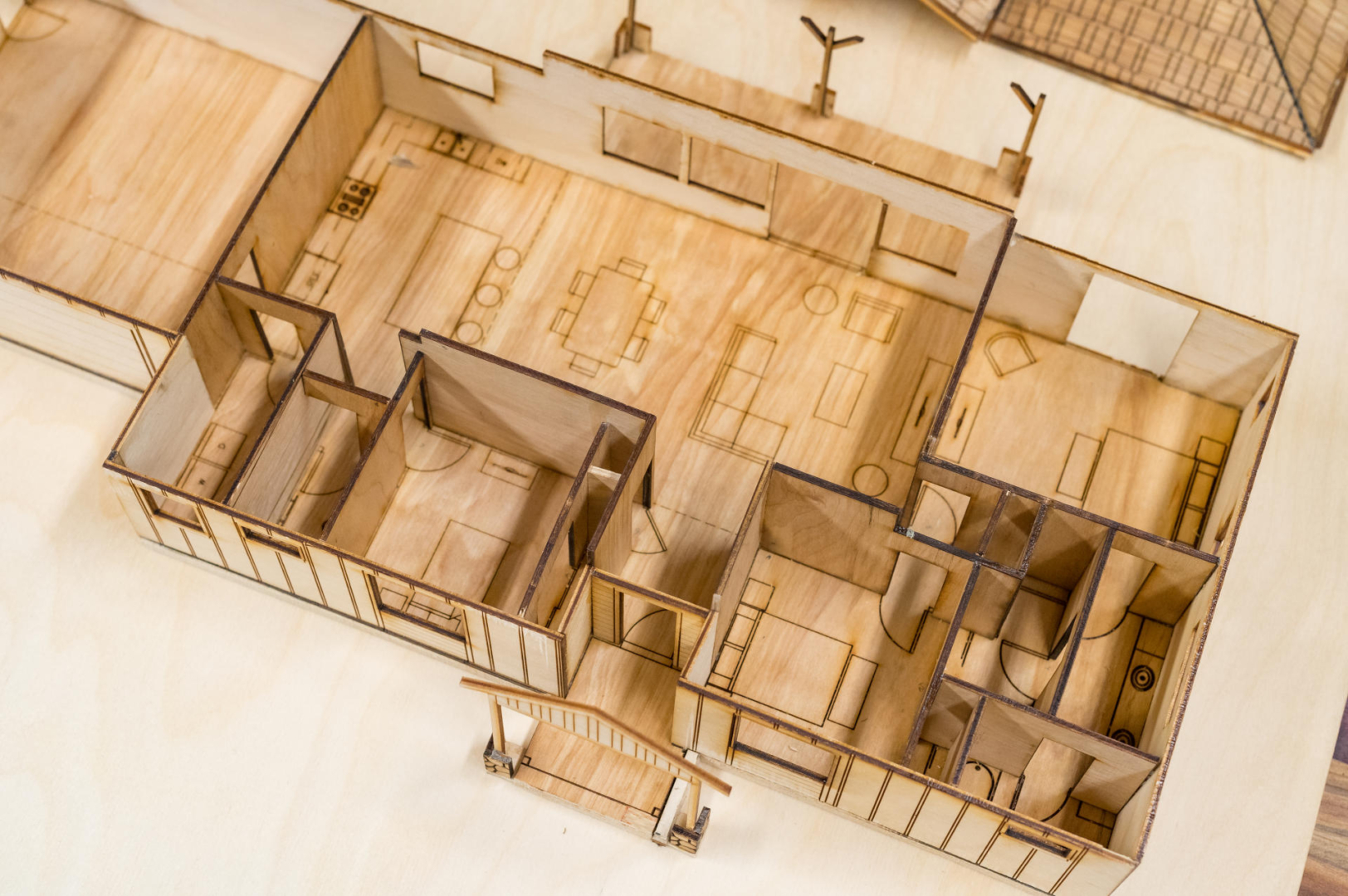
With design concepts finalized, the project halted for a semester at the start of the pandemic. In spring 2021, Mohiuddin went on sabbatical to take the plans through the plan approval and permitting processes with his company, Design SI, so that they were code-compliant and included details for all interior fixtures and finishes, making the process as streamlined as possible for those looking to rebuild.
The team reunited in fall 2021 with new participants, and the interior architecture students spent every Friday in the campus lab, laboriously laser-cutting wooden forms to create perfect models. For hours, they worked to get the angles just right and ensure their dimensions were realistic, and added details like expertly etched shingles on the roof and sketches for sample furniture, like bar stools or nightstands.
Senior Charvi Grover, an interior architecture major, was homesick as a first-year student in 2019 when Mohiudden invited her to fill her time with his senior students working on this project. An international student from Delhi, India, she didn’t know anything about the Camp Fire, but after she watched a documentary, she felt a strong pull to help. She began spending afternoons and weekends watching the seniors work—and speaking up with her own ideas. She’s since spent the last three years dedicated to the designs.
“People spend their whole lives to get their own home. Anything we could do to make someone feel safe in their space, to put a roof over their head, was worth it. It is not sympathy that people need in times like this but empathy to feel what they are going through, and this project gave us that and the opportunity to do something about it,” she said.
The final designs range from 890 to 2,100 square feet, feature one to four bedrooms, and are styled like either a mountain Craftsman or stucco cottage. Some include the option for an attached or detached garage. The homes are not just functional—they are beautiful.
The students’ designs are included in a current exhibition at the Palo Alto Art Center as part of an exploration on the devastating and transformative power of fire. Fire Transforms runs through December 10. The show is curated by Rina Faletti, curator of the Jacki Headley University Art Gallery at Chico State, and she said it was only natural to include the students’ designs alongside photography, painting, sculpture, and textiles to address the devastation of catastrophic wildfires.
Ultimately, two of the students’ designs were approved by the Town of Paradise and made available to qualifying builders for free through the town’s pre-approved Residential Floor Plan Library, as several others await engineering approval. This enabled homeowners and developers both to access them and begin construction without a lengthy design approval or costly permitting process.
To date, more than 30 students have been involved, and while a number of individual homeowners have utilized the two available plans, the biggest impact came when Habitat for Humanity optioned the 960-square-foot cottage known as “The Flumes” design for a master-build project, where dozens of homes in a single neighborhood would be produced using the same floorplan.
After the first Habitat homes broke ground in fall 2021, Chico State construction management students volunteered their time to assist on construction of three homes—which are all occupied today.
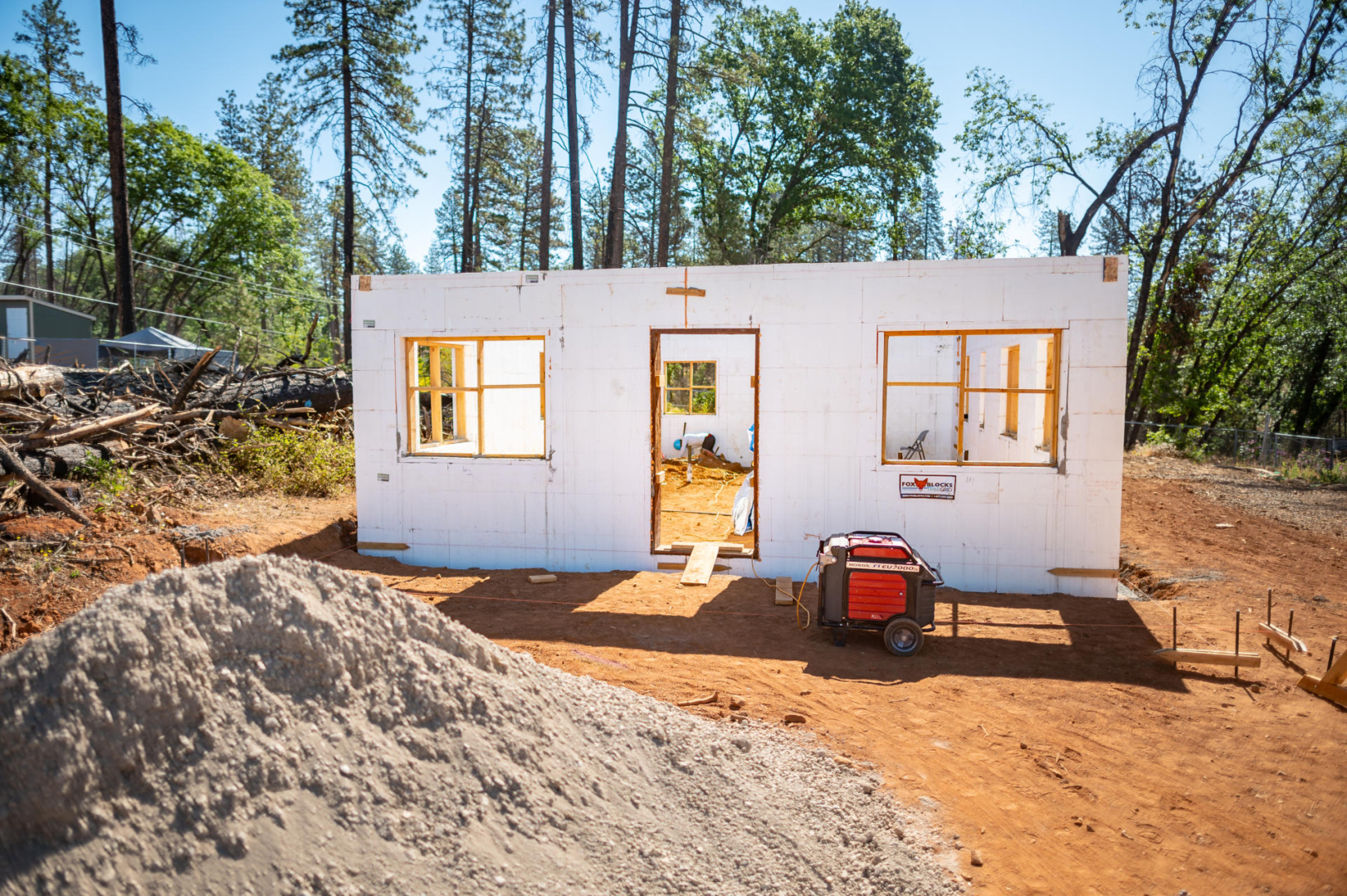
Such community partnerships have been part of Mohiuddin’s philosophy since he was a master’s student at the Southern California Institute of Architecture, where he worked on community outreach projects with his professors in the wake of the 1992 Los Angeles Riots. As he moved into academia, he carried this concept of design activism into his classrooms, and his students have subsequently worked on projects ranging from hospital spaces to an orphanage complex in Bangladesh.
During the Camp Fire, he knew immediately he wanted to help. After consulting with local builders and Senator Jim Nielsen’s office, he eventually connected with Charles Brooks (Business Administration, ’03), a board member with the Rebuild Paradise Foundation, who was eager to partner with his alma mater.
Brooks started the foundation three weeks after the Camp Fire. Working with Rebuild North Bay, which is leading a post-fire recovery effort in Sonoma and Napa Counties, the nonprofit continues to develop long-term recovery resources that can incentivize, attract, and retain residents and businesses. The Foundation also share its resources, like the floorplan library, with other communities that have experienced devastating wildfires.
About 40 percent of the population in the burn scar area, Brooks said, represent a group of hard-working, moderate-income individuals. The student support on their rebuilds not only saves the owners half the cost of permitting, but it relieves some of the mental burden of a daunting rebuild.
“It’s a mental lift,” Brooks said. “Most people in disasters never plan to build a home from scratch.”
He certainly never did. After losing his own home in the Camp Fire, it was an easy choice to put all his energy into returning the vitality to the town he called home for 15 years.
“It gives people hope,” he said, of the home designs. “When I’m in a room that is confident about rebuilding, I’m excited about rebuilding. And to see the giving spirit—that they just want to help, and we can facilitate that—it’s unbelievable.”
Reflecting on how his undergrad experience was all about relationships, networking, being engaged in the community, and giving back, Brooks said it has been heartwarming to see the student’s designs take shape in real life.
“When you are in the middle of building something, you can be so focused on the individual project that it isn’t until now that I drive around and see houses from the floorplan library and appreciate all the professionals it took to make it happen,” he said, noting a “Flumes” home was rebuilt across the street from his own.
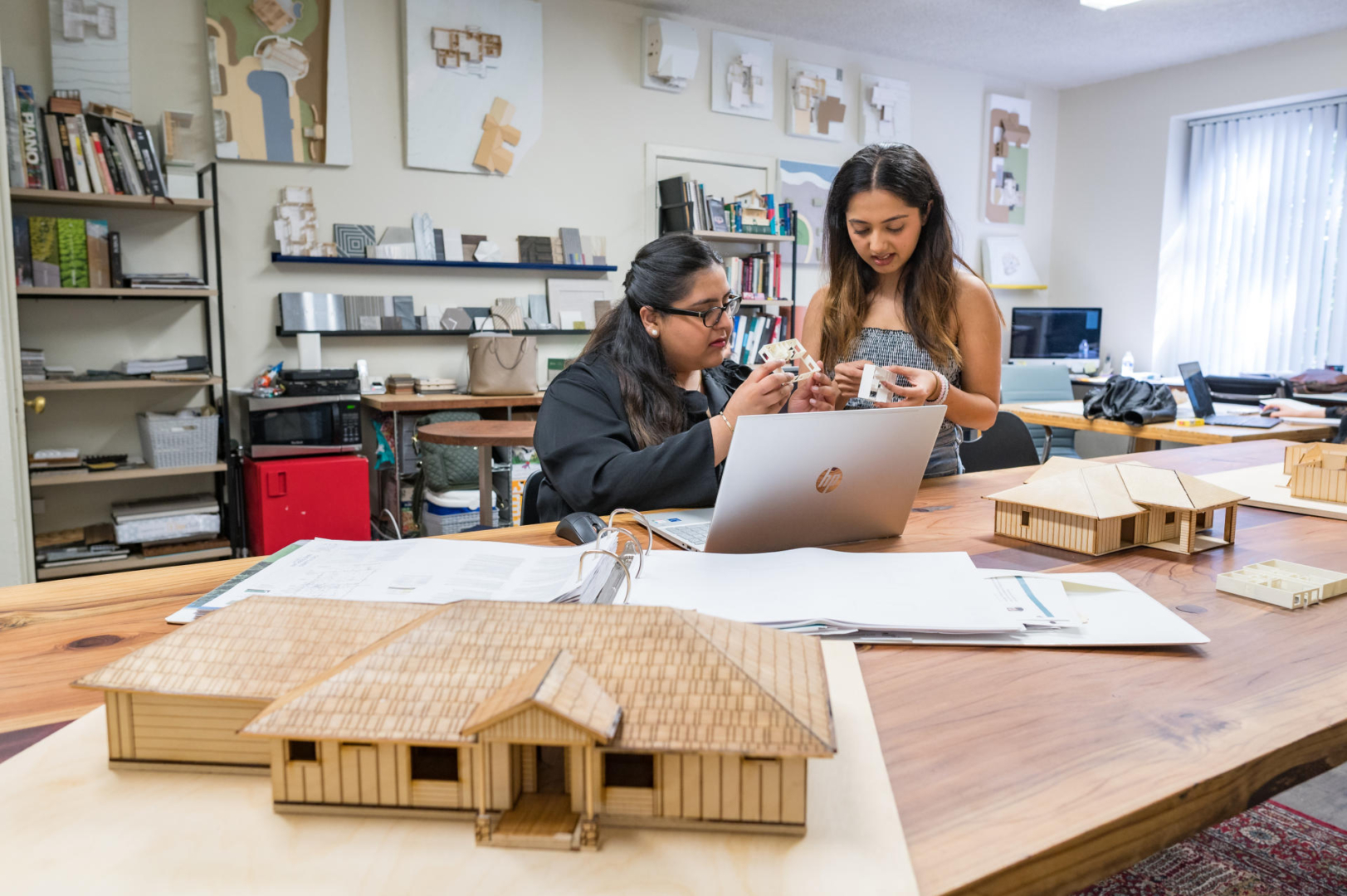
“It’s incredibly gratifying to know all the partnerships and efforts materialized into something meaningful,” he added. “It’s one of the greatest honors of my life to have been involved with that and work with so many incredible people to make it happen.”
Key to making the students’ designs a reality was Rancho Engineering, owned by Magalia resident Jarrod Holliday (Civil Engineering, ’99). Having operated his business in Paradise for so many years and watching all his employees lose their homes in the fire, he offered his services pro bono to Rebuild Paradise Foundation and was eager to work with students from his alma mater to provide the engineering and structural oversight.
“Their designs are quite good. They are in touch with the look they were after, the function of the home, and sizing things appropriately,” he said. “The purpose of the University is to be developing future professionals for the industry, and to allow them to use their skills while they are still in school speaks to the quality of the program.”
Just like Brooks, having seen the devastation in some of its darkest moments, Holliday agrees that watching their designs literally rise up in Paradise gives hope, not just to himself but to the entire community.
“There is a lot of pride in being able to assist the town coming back, especially as you are driving through town and you see these projects and you have smiling, happy families and other folks who are back in their homes again,” he said. “This project has been more helpful than the students ever thought it would be, and it’s so exciting to see.”
It was a good project for a program that has long flown under the radar, Mohiuddin said. With both the artistic and creative talent and the technical skills, graduates of the interior architecture program routinely are hired at major design firms throughout he globe, from New York to San Francisco and Shanghai to Beijing, and produce award-winning designs recognized by the Architecture Institute of America.
Mohiuddin has no doubt the students involved in this project will continue that legacy, while improving communities around the nation and the world.
“Without the support and dedication of our students, we wouldn’t be here today,” he said. “As future designers of environments, my goal was to instill a sense of responsibility in the building of their communities. This is just purely giving back and there is a different kind of satisfaction. Good design should be for everybody.”


